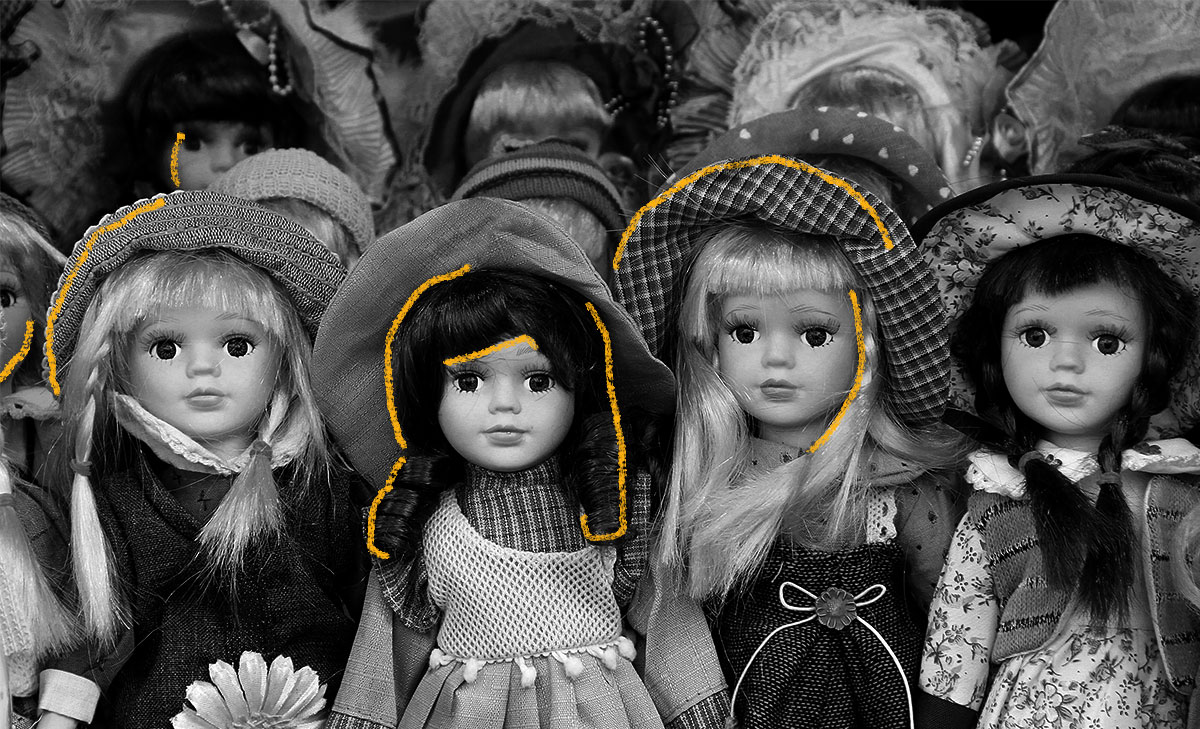Porcelain dolls first became popular in the 1800s. They were made from a material called china and originated in Germany and France. The hairstyles and clothing featured on the dolls mirrored what fashionable women in these areas wore at the time. The doll’s hair was part of the china mold, so it was flat on top with large, sausage-like curls in the back. The doll’s hands and feet were also made of china and the feet were intricately painted with a facsimile of stockings or boots. At first, these dolls were all made to resemble adult women. The first doll that looked like a baby instead of an adult woman was created by Emil-Louis Jumeau; it was called the French Bebe and was so expensive that only the wealthy could afford it. Porcelain dolls were originally made-to-order by skilled dollmakers. Jumeau, Bru, Gaultier, Rohmer, and Huret were some of the first famous doll makers. Eventually, porcelain dolls began to be mass produced and the dolls became affordable enough for more ordinary people to purchase them. Today, porcelain dolls remain popular, but are generally considered a collector’s item rather than a child’s toy.

Your go-to guide for weird history facts
Subscribe to the FREE daily email that makes learning about history fun.


